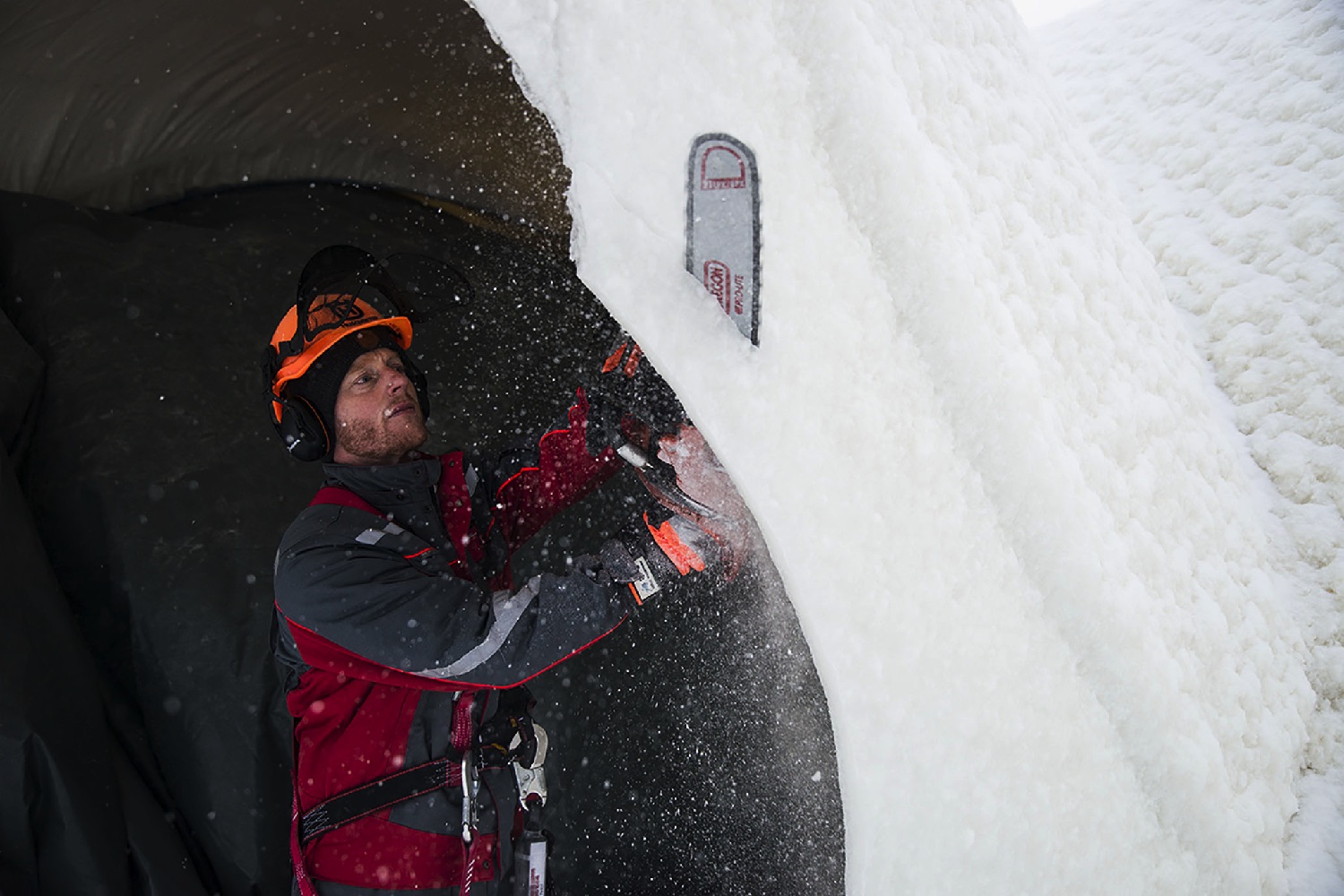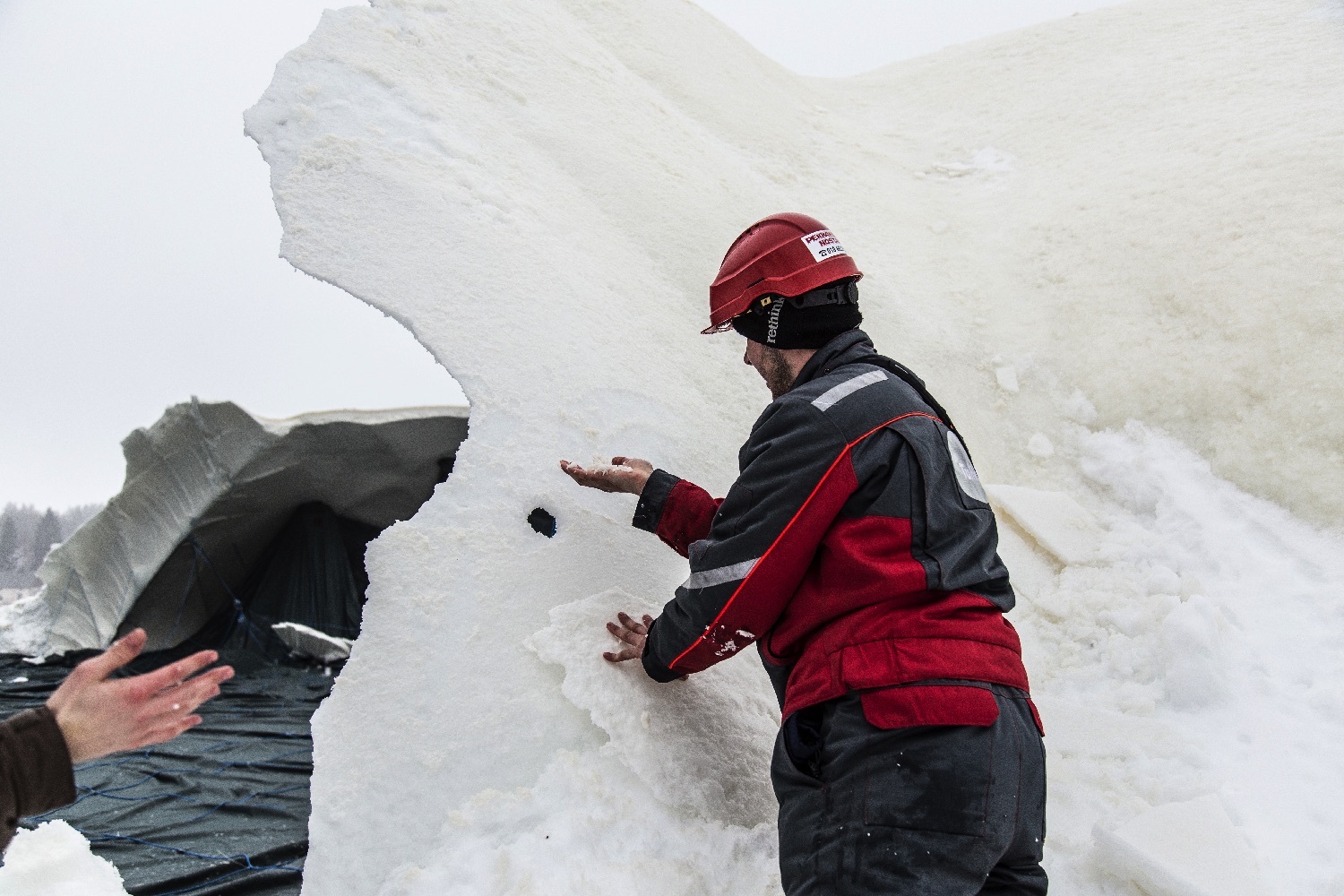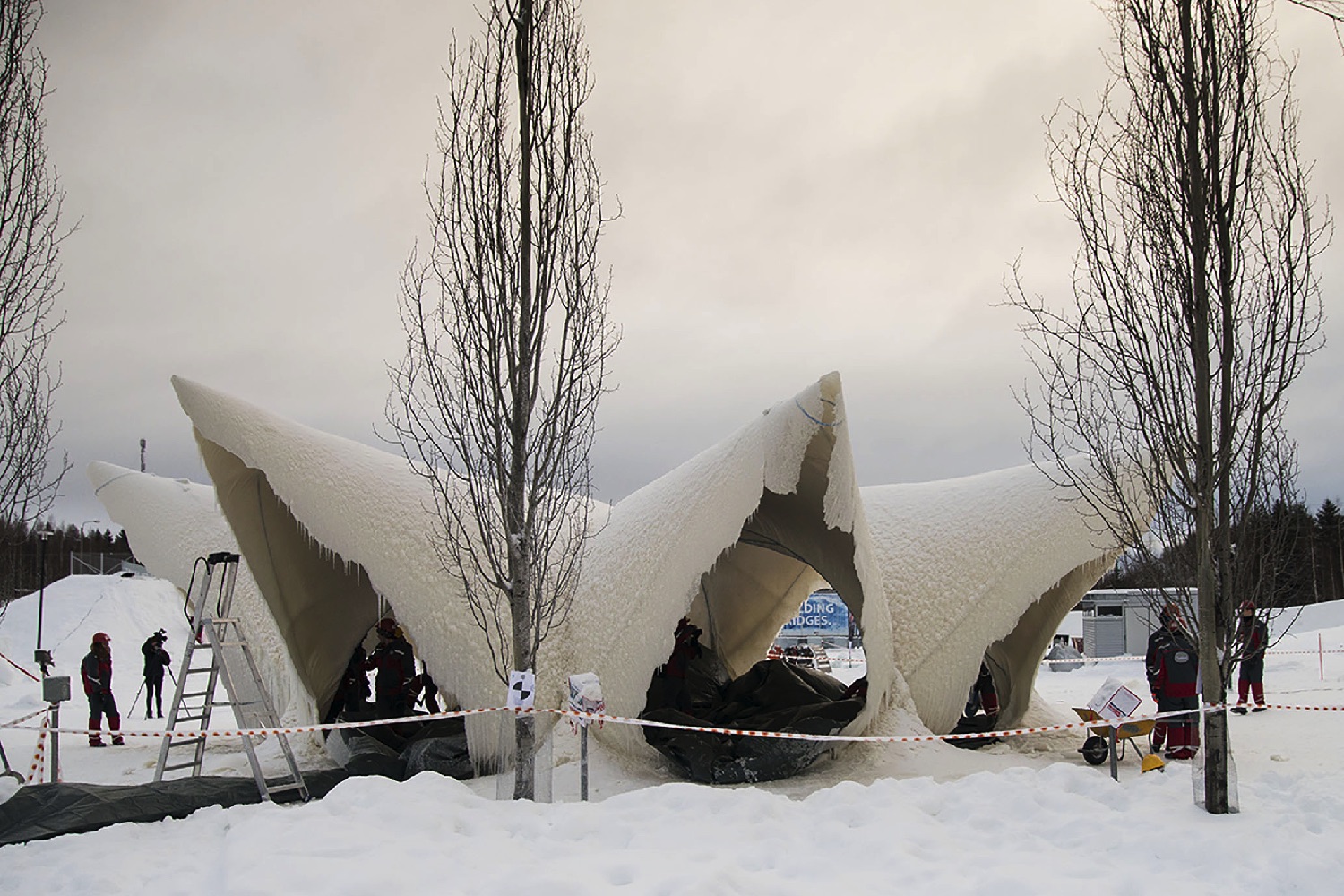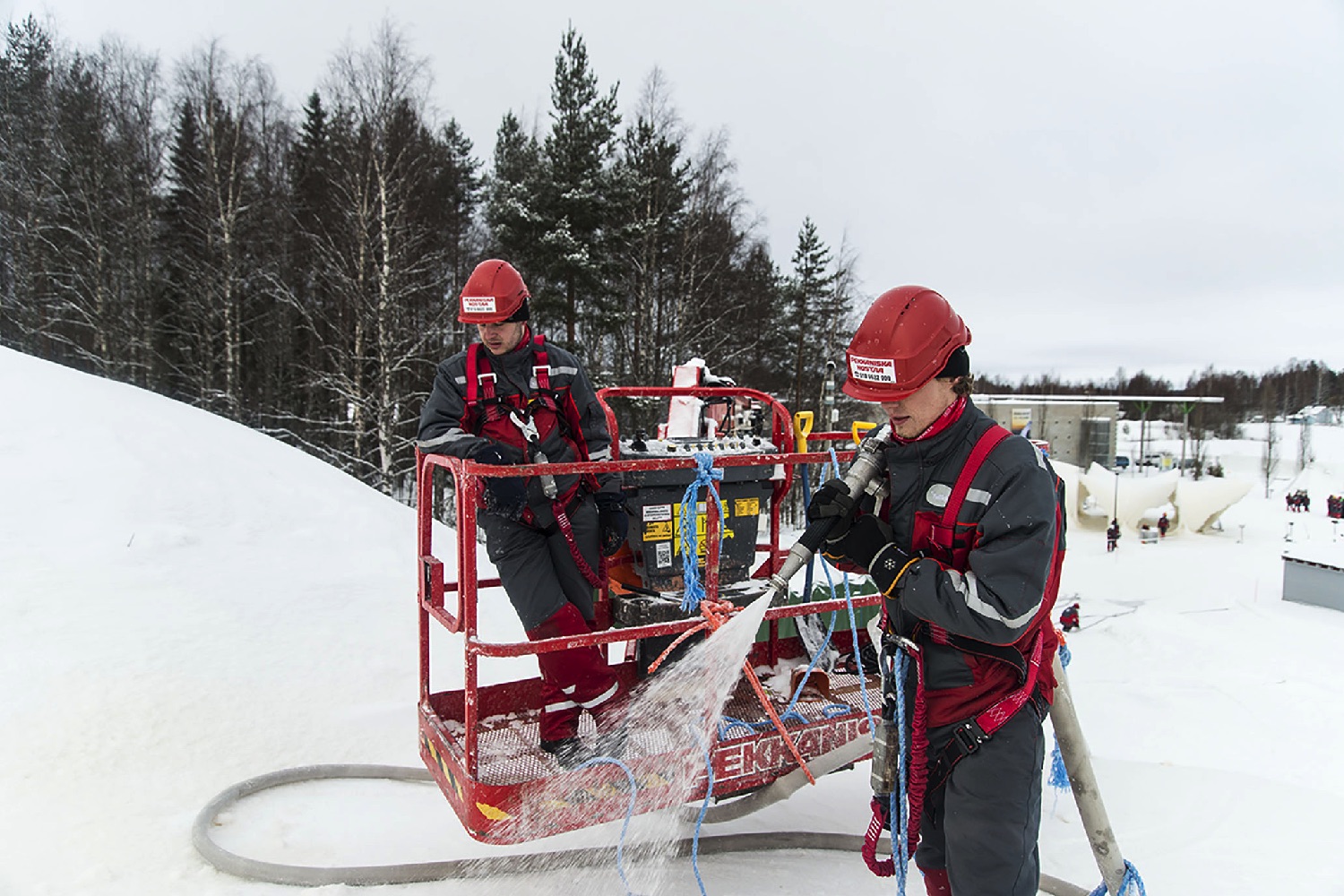Over the past six years, the Dutch researchers have worked to prove the potential of a certain type of high-tech ice as a building material; developing a special variant of the cold stuff that is reinforced using fibers from wood or cellulose to make it stronger and tougher. Having previously demonstrated the material closer to home with projects like a giant 2014 dome, which set a record for the largest ice dome ever built, they now want to head to China’s Harbin International Ice and Snow Sculpture Festival, the world’s largest ice event. Once there, the plan is to construct an enormous ice tower as the most impressive proof of concept yet for their chilly material.
“Previous projects were constructed in Finland,” Yaron Moonen, a graduate student from the University of Technology Eindhoven’s department of structural design and construction technology, told Digital Trends. “However, the unstable weather forced us to another place. That place is Harbin in China. Since the world ice festival is held there every year, it was the ideal place for our new project.”
Creating their structures is not simply a matter of piling up reinforced ice. The process involves first creating the structure using inflatables, which are then sprayed layer by layer. An ice shell is then formed, the inflatable removed, and the structure is left with the ability to stand on its own.
For the Harbin project, Moonen and other researchers from Eindhoven and the Catholic University of Leuven are turning to Kickstarter to help fund their journey. While it’s not a classic Kickstarter in terms of bringing a product to market, the creators are nonetheless offering some pretty sweet rewards — ranging from samples of the material to a tour of the building site (flights not included). Plus you get the warm, fuzzy feeling of knowing you contributed to some fascinating work.
In the future, the dream is that the technology could help build sustainable housing on the approximately 12 percent of the Earth’s surface that’s permanently covered in snow and ice. “We try to show the possibilities of building with ice,” Moonen continued. “By building our projects, we hope to inspire people to use ice. Not only can it be used in areas with permafrost, but it can also be used as temporary storage during winter periods.”
The hope is that the reinforced fiber-packed ice could even extend to being a material for building on places like Mars, without having to transport large quantities of building materials into space to do so.







